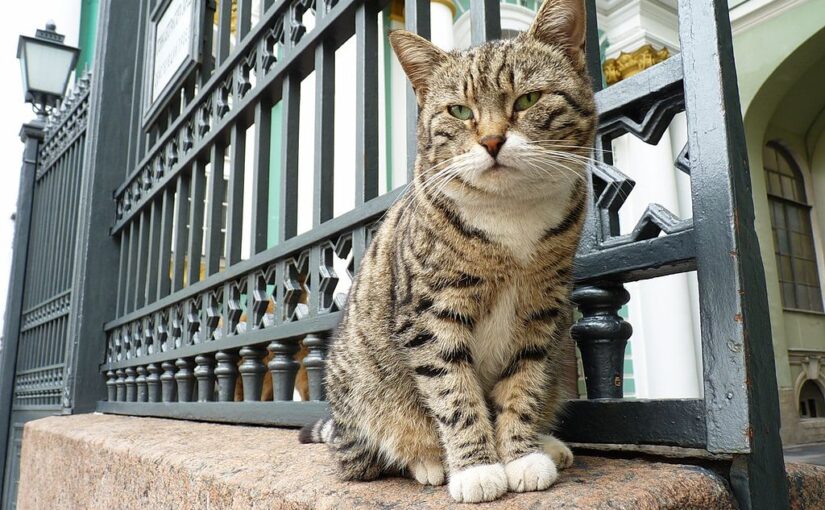For centuries, cats walked a precarious line between reverence and revulsion in European society. By the late Middle Ages, they had become entangled in the dark mythology of witchcraft, suffering persecution alongside those accused of sorcery. But as the flames of superstition began to dim in the 17th century, a remarkable transformation took place. The cat, once feared as a demonic familiar, slowly reclaimed its place in human hearts and homes.
The Great Rehabilitation
The shift began subtly. As Enlightenment thinking spread across Europe and witch trials declined, people gradually stopped attributing supernatural powers to cats. The animals were no longer seen as vessels of evil but rather as what they had always been: skilled hunters and surprisingly pleasant companions. It became socially acceptable once again to own a cat or be associated with one, a seemingly small change that marked a profound cultural turning point.
Cats began their return to respectability by slipping back into the spaces they had occupied centuries before. Noble estates welcomed them into their halls, while farmers rediscovered their value in protecting grain stores from rodents. This practical appreciation laid the groundwork for something entirely new: cats as objects of aesthetic admiration and even competitive display.
The Birth of Cat Fancy
The first recorded cat show took place in 1598 at the St. Giles Fair in Winchester, England, a curious early experiment that predated the organized cat fancy movement by more than two centuries. But it wasn’t until the mid-18th century that public interest in showcasing cats began to grow in earnest, reflecting broader changes in how people viewed pets and domestic animals.
The true catalyst came during the Victorian era, when Britain’s fascination with classification, collection, and exhibition reached its peak. Enter Harrison Weir, an artist, writer, and devoted cat enthusiast who would become known as the father of the cat fancy. Weir organized what is widely considered the first major cat show, held on July 13, 1871, at the magnificent Crystal Palace in Sydenham, London.
The event was a sensation. Over two days, approximately 20,000 visitors streamed through the exhibition to view 170 cats, mostly British Shorthairs and Persians. Among them was a Siamese cat, the first of its breed to be exhibited in Britain, causing considerable excitement among attendees. The show was democratic in its own way. While the first exhibition attracted mostly middle and upper-class cat lovers, a second show in December 1871 introduced a category specifically for the “working man’s cat,” acknowledging that feline appreciation crossed class boundaries.
Weir went on to found and serve as the first president of the National Cat Club, cementing the organizational structure that would govern cat exhibitions for generations. The trend crossed the Atlantic, and on May 8, 1895, the first American cat show opened at Madison Square Garden, bringing competitive cat breeding and showing to the New World.
Cats on the Payroll
While cats were becoming stars of exhibition halls, they were also earning their keep in more practical settings. In 1868, England’s Money Order Office established what became known as the “Cat System,” paying one shilling per week to feed three cats tasked with keeping the building free of rodents. The program proved so successful that it spread to post offices throughout England, remaining in effect at some branches well into the 1960s. These were perhaps the first officially salaried cats in modern history, their mousing services deemed worthy of government expenditure.
Guardians of Culture
Libraries and museums also recognized the value of feline employees. Ancient manuscripts and priceless paintings were just as vulnerable to gnawing rodents as any ear of corn, making cats essential protectors of cultural treasures. But no institution has maintained a more storied relationship with its cats than the State Hermitage Museum in St. Petersburg, Russia.
The Hermitage cats trace their lineage back to 1745, when Empress Elizaveta Petrovna, daughter of Peter the Great, grew tired of the rodent problem in her palace. She issued a royal proclamation ordering that “the best mice-catching cats” be sent to the court, along with caretakers to tend them. The first contingent arrived shortly thereafter and performed their duties so admirably that they remained throughout the reigns of successive tsars.
These cats proved remarkably resilient. They survived the Communist Revolution unscathed, though their descendants were decimated during the Siege of Leningrad in World War II, when food became desperately scarce and many cats became meals themselves. After the war, their numbers were replenished. Today, approximately fifty cats live in the Hermitage basements, a colorful mix of former strays supported by staff donations and proceeds from an annual charity art sale featuring paintings by employees’ children. While they still patrol the grounds, they’re no longer permitted in the galleries, though some occasionally slip inside and trigger the electronic security system before being gently escorted out.
An Enduring Bond
The journey from pariah to pet, from witch’s familiar to internet sensation, reflects humanity’s evolving relationship with the natural world. Cats never changed; we did. In rediscovering their charm, utility, and companionship, we recovered something essential about ourselves: the capacity to appreciate creatures on their own terms, independent of superstition or fear. Today’s pampered house cat and working museum mouser alike carry forward a legacy centuries in the making, proof that bonds between species, once broken, can be beautifully restored.
Image: Hermitage cat by ewwl.
If you find joy in these tales of twitching whiskers and gleaming eyes, consider helping keep Whiskerito.com alive and purring. Your donation supports thoughtful research, engaging content, and the warm, wonder-filled community that makes this space what it is.
